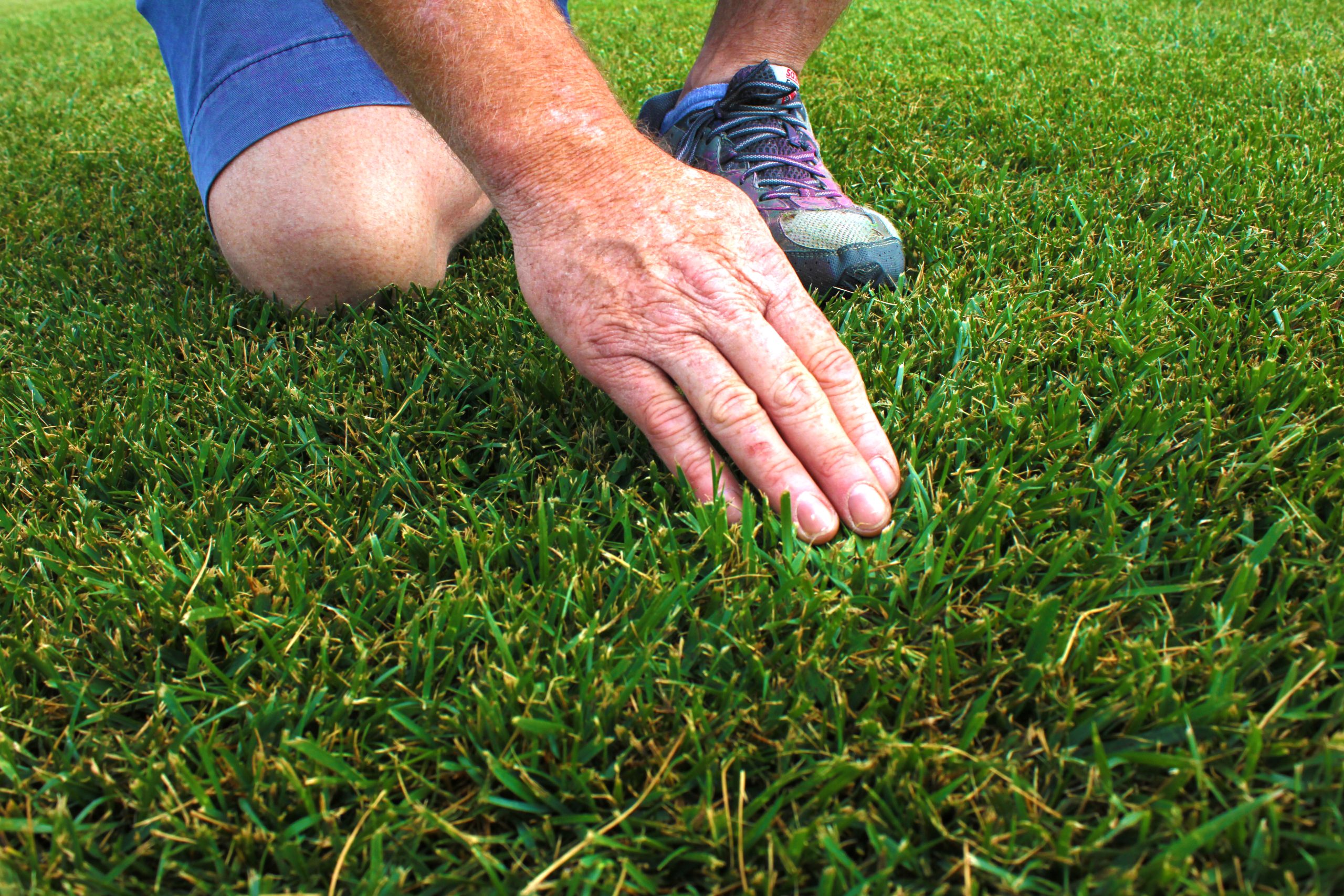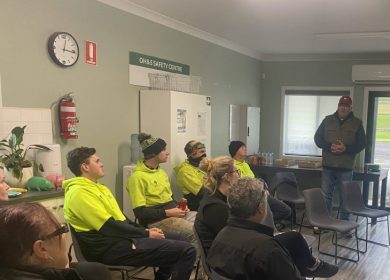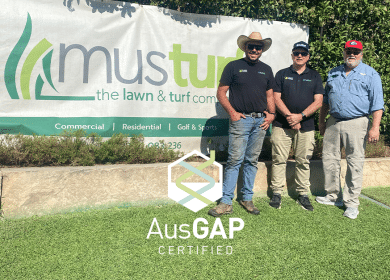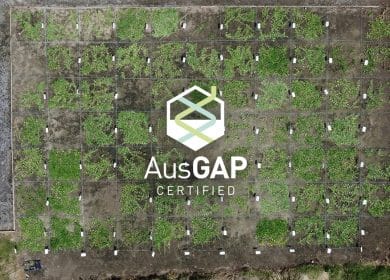Turf Certification – What is it and Why is it Important?

The International Turfgrass Genetic Assurance Program or ITGAP, was developed to ensure that the years of research and development into a new turf variety wouldn’t be lost to contamination or cross pollination.
ITGAP provides licences for turf producers to be able to grow and sell these certified grasses, monitors their production systems and supply of planting material. This ensures that the traits for selection are not lost in the ether. In Australia, the ITGAP Program is implemented through AusGAP, which is the only registered agent for ITGAP outside of the U.S in the world, run by Program Manager Nick Dorney.
What is the distinction between specifying and installing certified turf, versus uncertified turf? And what is certification, anyway?
Terry Hollifield is the Executive Director of the Georgia Crop Improvement Association, the certifying agency that inspects sod farms and certifies turf in the State of Georgia. Georgia Crop Improvement is one of 44 such agencies in the United States.
“If a landscaper, or an architect, knows that they have certain situations that need a certain variety with particular characteristics like shade tolerance or winter tolerance in the transition zone so there’s no winter kill, or if they are looking for a grass that’s low maintenance, the only assurance they have of getting that variety is through certification,” Hollifield says. “State and federal laws don’t apply to vegetative turfgrasses, the only standard is to require certification.”
The process of certification begins with the turf developer or breeder.
“It doesn’t matter if it’s a university variety or a private variety, the inventor of a new variety must complete an application for approval of the variety to be certified. The application includes information such as breeding history. (Was it selected or bred? Produced through asexual reproduction? Naturally occurring? Or irradiated?) Then they complete a section that talks about leaf colour, leaf shape, stolon colour, length of internodes, all those characteristics that determine a variety,” Hollifield says.
Claims like cold tolerance, shade tolerance, or drought resistance must also be substantiated.
“If you make a claim about the variety, this claim must be substantiated with reputable data. Say a breeder claims the grass has a light green stolon, that doesn’t mean anything, it must be referenced on the Munzel colour chart, or another known colour chart used for identification. It’s got to be good science. Any claim that is made, whether it’s a claim that I use as I make a field inspection, or a performance claim, (such as cold tolerance or drought tolerance), data must be provided.” he says.
Once a variety is approved for inclusion in the certification program, it will be licensed to turf producers who plant it on land that has been sterilised and known to be free of pests, weeds and foreign turf varieties. As the crop of turf grows in, it is subject to a minimum of four inspections per year by the growers and two by an ITGAP representative. Specially trained third-party inspectors who are not employed by the turf farms themselves walk every inch of a turf farm looking for weeds and off-type grasses. If weeds or off-type grasses are found in a field, that field may be quarantined, meaning no turf can be harvested from that field until the weed or off-type is removed and the field has been re-inspected for varietal purity.
“Sometimes I feel like I’ve walked from Darwin to Adelaide and back five-times in my career looking for that needle in a haystack,” says Nick Dorney.
Dorney, who has been responsible for the implementation and running of the AusGAP program in Australia, inspects every licensed AusGAP farm for weeds and off-type grasses. “With some varieties, you’re looking for a needle in a haystack, that clump of grass that may be no bigger than a thimble.”
If anything other than the certified variety is found in the field, no turf may be harvested until the field is cleared of the infestation, re-inspected and re-certified.
“We require turfgrass certification on every variety that we release or take into the marketplace. It’s one of our fundamental imperatives. Genetic purity is part of our mission statement,” Dorney says. Those varieties include: Sir Grange Zoysia, L1F Zoysia, TifTuf Hybrid Bermudagrass and DNA certified Sir Walter Buffalo.
“Certified turf from a Licensed and Certified turf producer establishes the integrity and genetic purity of the product. You know you are receiving the product you are paying for and that it comes with an AusGAP Certificate establishing the provenance of the grass,” Dorney says.
Hollifield agrees. “I’ll give you an example that validates that statement. If you go back to the 1980s, there were as many as 10 or 12 different kinds of Tifway (USA standard couch) being sold, that’s 10 or 12 imposters being sold as Tifway. In about 1990 or 1991, I performed a survey in Georgia and collected samples from big box stores and nurseries. About 50% were in fact not Tifway. The only way to make sure you purchase Tifway, or any other specific grass, is to buy certified,” Hollifield says.
Dorney iterates, “We are trying to assure the end consumer they are receiving the specific variety that they have requested. If an athletic field wants TifTuf, we want them to know they are receiving TifTuf. If a golf course with a lot of shade purchase Sir Grange, we want them to know that they are getting Sir Grange.”
Hollifield and Dorney agree that growing certified turf is the future of the turf industry. “Specification and the requirement for certified turf is becoming more common. If you’re not growing certified varieties of grass, I don’t think you can stay in business,” Hollifield says. “For a producer to be licenced to grow the new grasses that are developed by breeders, certification is not a choice, it’s a requirement. If you are a turf producer and you’re not growing these new certified varieties, you’re not going to stay in the industry very long.”


